Speakers & Moderators
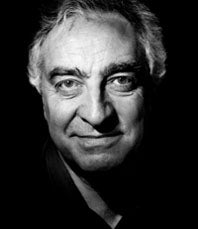 Marco Cianchi has studied art history in Florence and Bologna and researched postwar American art in the US (Columbia University, New York; Brown University, Providence, Rhode Island). He is a teacher of Italian art to American students and American art to Italian students and has kept a constant dialogue between the two cultures. Concerning modern art, he has published on Action Painting, Futurism, and other 20th century topics or artists. Concerning renaissance studies, he has written on Leonardo da Vinci’s machines, paintings, codices, anatomical drawings, cooperating with famed da Vinci scholar Carlo Pedretti. Has has also published on Pierino da Vinci, XVI century sculptor and Leonardo’s nephew. Marco is an Art History Professor at the Florence Academy of Fine Arts (established in 1784) and also taught Renaissance and Modern Art at some of the Study Abroad Programs of American universities in Florence (i.e. CSUIP, Sarah Lawrence, Georgetown).
Marco Cianchi has studied art history in Florence and Bologna and researched postwar American art in the US (Columbia University, New York; Brown University, Providence, Rhode Island). He is a teacher of Italian art to American students and American art to Italian students and has kept a constant dialogue between the two cultures. Concerning modern art, he has published on Action Painting, Futurism, and other 20th century topics or artists. Concerning renaissance studies, he has written on Leonardo da Vinci’s machines, paintings, codices, anatomical drawings, cooperating with famed da Vinci scholar Carlo Pedretti. Has has also published on Pierino da Vinci, XVI century sculptor and Leonardo’s nephew. Marco is an Art History Professor at the Florence Academy of Fine Arts (established in 1784) and also taught Renaissance and Modern Art at some of the Study Abroad Programs of American universities in Florence (i.e. CSUIP, Sarah Lawrence, Georgetown).
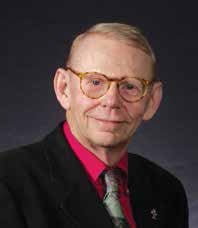 Bill Cook retired from teaching at SUNY Geneseo after 42 years, with the title of Distinguished Teaching Professor of History. He has authored several books about medieval history and local history and has made 10 audio/video courses for The Great Courses. Bill has won teaching awards from SUNY, The Council for the Advancement and Support of Education, Baylor University, and the Medieval Academy of America. He is a specialist in the history of Christianity and has written extensively about St. Francis of Assisi and his Order. In retirement, Bill created the Bill Cook Foundation, a 501(c)(3) that helps some of the world’s poorest children in 18 countries receive good education. He spends about half of each year visiting Foundation-supported institutions and students in Southeast and South Asia, East Africa, Eastern Europe, and Central America.
Bill Cook retired from teaching at SUNY Geneseo after 42 years, with the title of Distinguished Teaching Professor of History. He has authored several books about medieval history and local history and has made 10 audio/video courses for The Great Courses. Bill has won teaching awards from SUNY, The Council for the Advancement and Support of Education, Baylor University, and the Medieval Academy of America. He is a specialist in the history of Christianity and has written extensively about St. Francis of Assisi and his Order. In retirement, Bill created the Bill Cook Foundation, a 501(c)(3) that helps some of the world’s poorest children in 18 countries receive good education. He spends about half of each year visiting Foundation-supported institutions and students in Southeast and South Asia, East Africa, Eastern Europe, and Central America.
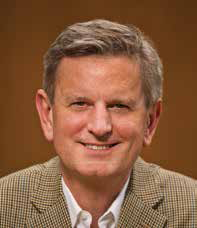 Alan Fletcher, an accomplished music administrator and respected composer, earned his baccalaureate at Princeton University and his master’s degree and doctorate at Juilliard. He studied composition with Roger Sessions, Milton Babbitt, Edward T. Cone, and Paul Lansky and piano with Jacob Lateiner and Robert Helps. In 1985, Fletcher was appointed to the faculty of the New England Conservatory of Music, and served as Dean, Provost, and Senior Vice President. He was Professor of Music and Head of the School of Music at Carnegie Mellon University in Pittsburgh, after which he assumed his current position as president and CEO of the AMFS. Fletcher has lectured nationally and internationally and served on many boards and panels. He has also contributed articles to the Huffington Post, The Guardian, the Wall Street Journal, Baltimore Sun, Chronicle of Higher Education, and many others. Fletcher has won numerous composing awards and received commissions from many noted ensembles and soloists.
Alan Fletcher, an accomplished music administrator and respected composer, earned his baccalaureate at Princeton University and his master’s degree and doctorate at Juilliard. He studied composition with Roger Sessions, Milton Babbitt, Edward T. Cone, and Paul Lansky and piano with Jacob Lateiner and Robert Helps. In 1985, Fletcher was appointed to the faculty of the New England Conservatory of Music, and served as Dean, Provost, and Senior Vice President. He was Professor of Music and Head of the School of Music at Carnegie Mellon University in Pittsburgh, after which he assumed his current position as president and CEO of the AMFS. Fletcher has lectured nationally and internationally and served on many boards and panels. He has also contributed articles to the Huffington Post, The Guardian, the Wall Street Journal, Baltimore Sun, Chronicle of Higher Education, and many others. Fletcher has won numerous composing awards and received commissions from many noted ensembles and soloists.
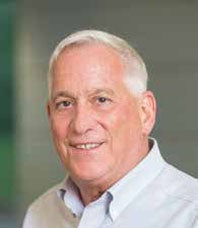 Walter Isaacson is president and CEO of the Aspen Institute. He has been chairman and CEO of CNN and editor of TIME magazine. Isaacson’s most recent book is The Innovators; he is also the author of Steve Jobs and several other best-selling biographies. He is vice chair of Partners for a New Beginning, a public-private group tasked with forging ties between the United States and the Muslim world and serves on the boards of United Airlines, Tulane University, and Harvard University. Isaacson is chair emeritus of Teach for America, was chairman of the Broadcasting Board of Governors, and was vice chair of the Louisiana Recovery Authority from 2005 to 2007.
Walter Isaacson is president and CEO of the Aspen Institute. He has been chairman and CEO of CNN and editor of TIME magazine. Isaacson’s most recent book is The Innovators; he is also the author of Steve Jobs and several other best-selling biographies. He is vice chair of Partners for a New Beginning, a public-private group tasked with forging ties between the United States and the Muslim world and serves on the boards of United Airlines, Tulane University, and Harvard University. Isaacson is chair emeritus of Teach for America, was chairman of the Broadcasting Board of Governors, and was vice chair of the Louisiana Recovery Authority from 2005 to 2007.
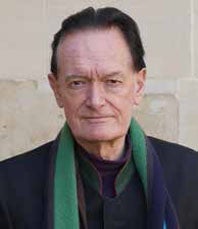 Martin Kemp was trained in Natural Sciences and Art History at Cambridge University and the Courtauld Institute, London. His books include The Science of Art: Optical Themes in Western Art from Brunelleschi to Seurat (Yale) and Christ to Coke: How Image Becomes Icon (Oxford) which looks at eleven representatives of types of icons across a wide range of public imagery. He has published and broadcast extensively on Leonardo da Vinci, including the prize-winning Leonardo da Vinci and also Leonardo (both Oxford). He wrote regularly for Nature and his most recent book is Structural Intuitions: Seeing Shapes in Art and Science (University of Virginia Press). He has been a Trustee of the National Galleries of Scotland, The Victoria and Albert Museum and British Museum. He has also curated and co-curated a series of exhibitions on Leonardo and other themes, and is now speaking, writing, and broadcasting full-time.
Martin Kemp was trained in Natural Sciences and Art History at Cambridge University and the Courtauld Institute, London. His books include The Science of Art: Optical Themes in Western Art from Brunelleschi to Seurat (Yale) and Christ to Coke: How Image Becomes Icon (Oxford) which looks at eleven representatives of types of icons across a wide range of public imagery. He has published and broadcast extensively on Leonardo da Vinci, including the prize-winning Leonardo da Vinci and also Leonardo (both Oxford). He wrote regularly for Nature and his most recent book is Structural Intuitions: Seeing Shapes in Art and Science (University of Virginia Press). He has been a Trustee of the National Galleries of Scotland, The Victoria and Albert Museum and British Museum. He has also curated and co-curated a series of exhibitions on Leonardo and other themes, and is now speaking, writing, and broadcasting full-time.
 Ross King is the award-winning author of books on Italian and French art and history. Among his works are Brunelleschi’s Dome (2000), Michelangelo and the Pope’s Ceiling (2002), and Leonardo and The Last Supper (2012). He has also written a biography of Niccolò Machiavelli and a collection of Leonardo da Vinci’s fables, jokes, and riddles. He is the co-author with Anja Grebe of Florence: The Paintings & Frescoes, 1250-1743 (2015), the most comprehensive work ever undertaken on the art of Florence. He serves on the Council of Academic Advisors for Friends of Florence (FoF), the fundraising charity that ensures the survival of Florence’s art and architectural treasures.
Ross King is the award-winning author of books on Italian and French art and history. Among his works are Brunelleschi’s Dome (2000), Michelangelo and the Pope’s Ceiling (2002), and Leonardo and The Last Supper (2012). He has also written a biography of Niccolò Machiavelli and a collection of Leonardo da Vinci’s fables, jokes, and riddles. He is the co-author with Anja Grebe of Florence: The Paintings & Frescoes, 1250-1743 (2015), the most comprehensive work ever undertaken on the art of Florence. He serves on the Council of Academic Advisors for Friends of Florence (FoF), the fundraising charity that ensures the survival of Florence’s art and architectural treasures.
 Jeff Koons is an artist who works with everyday objects; his work revolves around themes of self-acceptance and transcendence. He is widely known for his sculptures Rabbit and Balloon Dog, as well as his monumental floral works Puppy and Split-Rocker. Since his first solo exhibition in 1980, Koons’s work has been shown in major galleries and institutions throughout the world. His art was the subject of the 2014-’15 exhibition, Jeff Koons: A Retrospective, which was organized by the Whitney Museum of American Art and traveled to the Centre Pompidou Paris and the Guggenheim Bilbao.
Jeff Koons is an artist who works with everyday objects; his work revolves around themes of self-acceptance and transcendence. He is widely known for his sculptures Rabbit and Balloon Dog, as well as his monumental floral works Puppy and Split-Rocker. Since his first solo exhibition in 1980, Koons’s work has been shown in major galleries and institutions throughout the world. His art was the subject of the 2014-’15 exhibition, Jeff Koons: A Retrospective, which was organized by the Whitney Museum of American Art and traveled to the Centre Pompidou Paris and the Guggenheim Bilbao.
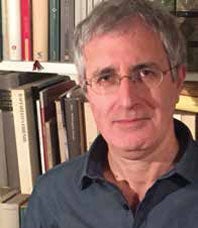 Domenico Laurenza is a science historian with interest in the history of art and visual culture. He is an expert in Leonardo da Vinci’s scientific work, the history of anatomy and technology in the Renaissance, and the history of geology. He was trained in Medicine (University of Naples) and Historical Sciences (PhD, Scuola Superiore di Studi Storici, San Marino, 1996). He is research fellow at Trinity College, Dublin and scientific consultant for University of Roma Tre, Schroeder Arts Consulting (New York) and Museo Galileo (Florence). He has taught or has been a fellow at several scientific institutions, including McGill University, the Warburg Institute, and the Italian Academy at Columbia University. Among his books available in English are: Leonardo on Flight (John Hopkins University Press 2007); Art and Anatomy in Renaissance Italy (The Metropolitan Museum of Art, 2012); Leonardo da Vinci’s Codex Leicester (with Martin Kemp. Oxford University Press, forthcoming).
Domenico Laurenza is a science historian with interest in the history of art and visual culture. He is an expert in Leonardo da Vinci’s scientific work, the history of anatomy and technology in the Renaissance, and the history of geology. He was trained in Medicine (University of Naples) and Historical Sciences (PhD, Scuola Superiore di Studi Storici, San Marino, 1996). He is research fellow at Trinity College, Dublin and scientific consultant for University of Roma Tre, Schroeder Arts Consulting (New York) and Museo Galileo (Florence). He has taught or has been a fellow at several scientific institutions, including McGill University, the Warburg Institute, and the Italian Academy at Columbia University. Among his books available in English are: Leonardo on Flight (John Hopkins University Press 2007); Art and Anatomy in Renaissance Italy (The Metropolitan Museum of Art, 2012); Leonardo da Vinci’s Codex Leicester (with Martin Kemp. Oxford University Press, forthcoming).
 Gary Radke is Professor Emeritus of Art History at Syracuse University, where he directed the Florence Graduate Program in Renaissance Art and was named Meredith Professor for Teaching Excellence. His publications on Italian medieval and Renaissance art range from a book on the thirteenth-century papal palace in Viterbo to essays on the patronage of nuns in Renaissance Venice. His exhibition catalogues for the High Museum of Art in Atlanta, in partnership with the Metropolitan Museum of Art, the National Gallery of Art, Chicago Art Institute, Detroit Institute of Art, the J. Paul Getty Museum, and the Toledo Museum of Art, focus on Italian Renaissance sculptors Lorenzo Ghiberti, Luca della Robbia, Andrea del Verrocchio, Michelangelo, and Leonardo da Vinci. His widely distributed college textbook, Art in Renaissance Italy, has appeared in four editions and in Spanish and Chinese translations. Gary is past president of the Italian Art Society and a fellow of the American Academy in Rome.
Gary Radke is Professor Emeritus of Art History at Syracuse University, where he directed the Florence Graduate Program in Renaissance Art and was named Meredith Professor for Teaching Excellence. His publications on Italian medieval and Renaissance art range from a book on the thirteenth-century papal palace in Viterbo to essays on the patronage of nuns in Renaissance Venice. His exhibition catalogues for the High Museum of Art in Atlanta, in partnership with the Metropolitan Museum of Art, the National Gallery of Art, Chicago Art Institute, Detroit Institute of Art, the J. Paul Getty Museum, and the Toledo Museum of Art, focus on Italian Renaissance sculptors Lorenzo Ghiberti, Luca della Robbia, Andrea del Verrocchio, Michelangelo, and Leonardo da Vinci. His widely distributed college textbook, Art in Renaissance Italy, has appeared in four editions and in Spanish and Chinese translations. Gary is past president of the Italian Art Society and a fellow of the American Academy in Rome.
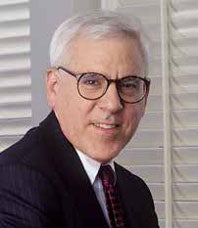 David Rubenstein is a Co-Founder and Co-CEO of The Carlyle Group, founded in 1987. Mr. Rubenstein is Chairman of the Boards of Trustees of the John F. Kennedy Center for the Performing Arts, Duke University, and the Madison Council of the Library of Congress, Chairman of the Board of Regents of the Smithsonian Institution, Co-Chairman of the Brookings Institution, Vice-Chairman of the Council on Foreign Relations, a Trustee of the National Gallery of Art and President of the Economic Club of Washington. Mr. Rubenstein is on the Board of Directors or Trustees of the University of Chicago, the Lincoln Center for the Performing Arts, the Memorial Sloan-Kettering Cancer Center, Johns Hopkins Medicine, the Institute for Advanced Study, and the National Museum of Natural History of the Smithsonian Institution. He is a member of the Harvard Business School Board of Dean’s Advisors and the Chairman of the Harvard Global Advisory Council.
David Rubenstein is a Co-Founder and Co-CEO of The Carlyle Group, founded in 1987. Mr. Rubenstein is Chairman of the Boards of Trustees of the John F. Kennedy Center for the Performing Arts, Duke University, and the Madison Council of the Library of Congress, Chairman of the Board of Regents of the Smithsonian Institution, Co-Chairman of the Brookings Institution, Vice-Chairman of the Council on Foreign Relations, a Trustee of the National Gallery of Art and President of the Economic Club of Washington. Mr. Rubenstein is on the Board of Directors or Trustees of the University of Chicago, the Lincoln Center for the Performing Arts, the Memorial Sloan-Kettering Cancer Center, Johns Hopkins Medicine, the Institute for Advanced Study, and the National Museum of Natural History of the Smithsonian Institution. He is a member of the Harvard Business School Board of Dean’s Advisors and the Chairman of the Harvard Global Advisory Council.
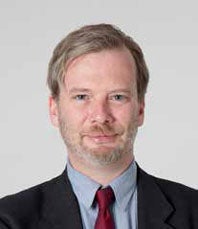 Luke Syson joined the British Museum as Curator of Medals in 1991. He co-edited the volume The Image of the Individual, co-wrote Objects of Virtue: Art in Renaissance Italy, and was one of the curators who put together the acclaimed Enlightenment Gallery. Syson was the co-curator of the 2001 National Gallery exhibition on Pisanello. He moved to the Victoria & Albert Museum (V&A) in 2002, as part of the team planning new galleries of Medieval and Renaissance art. In 2003, he began his work at the National Gallery in London. As Curator of Italian Painting before 1500 and Head of Research, Syson led the campaign to acquire Raphael’s Madonna of the Pinks, organized a display of Renaissance relief sculpture from the V&A, and curated the exhibition Renaissance Siena: Art for a City. In 2011, he organized Leonardo da Vinci: Painter at the Court of Milan. Syson joined The Metropolitan Museum of Art in 2012 as the Iris and B. Gerald Cantor Curator in Charge. He was promoted to Chairman in 2014. He is directing the renovation of the Aitken Galleries for British Decorative Arts scheduled to open in 2019.
Luke Syson joined the British Museum as Curator of Medals in 1991. He co-edited the volume The Image of the Individual, co-wrote Objects of Virtue: Art in Renaissance Italy, and was one of the curators who put together the acclaimed Enlightenment Gallery. Syson was the co-curator of the 2001 National Gallery exhibition on Pisanello. He moved to the Victoria & Albert Museum (V&A) in 2002, as part of the team planning new galleries of Medieval and Renaissance art. In 2003, he began his work at the National Gallery in London. As Curator of Italian Painting before 1500 and Head of Research, Syson led the campaign to acquire Raphael’s Madonna of the Pinks, organized a display of Renaissance relief sculpture from the V&A, and curated the exhibition Renaissance Siena: Art for a City. In 2011, he organized Leonardo da Vinci: Painter at the Court of Milan. Syson joined The Metropolitan Museum of Art in 2012 as the Iris and B. Gerald Cantor Curator in Charge. He was promoted to Chairman in 2014. He is directing the renovation of the Aitken Galleries for British Decorative Arts scheduled to open in 2019.
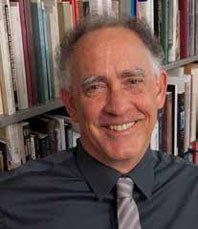 William Wallace is the Barbara Murphy Bryant Distinguished Professor of Art History at Washington University in St. Louis. He is an internationally recognized authority on the Renaissance artist, architect, and poet Michelangelo Buonarroti. He has published extensively on Renaissance art: in addition to more than ninety articles and essays, he has authored or edited seven different books on Michelangelo, including the award winning, Michelangelo: The Complete Sculpture, Painting and Architecture (1998), Michelangelo at San Lorenzo: The Genius as Entrepreneur (1994), and most recently, Discovering Michelangelo (New York, Rizzoli, 2012). His biography of the artist, Michelangelo: The Artist, the Man and his Times (Cambridge University Press, 2010) was issued in paperback in 2011. He has just completed a book on Michelangelo’s final years, from age 71 to 89, entitled God’s Architect.
William Wallace is the Barbara Murphy Bryant Distinguished Professor of Art History at Washington University in St. Louis. He is an internationally recognized authority on the Renaissance artist, architect, and poet Michelangelo Buonarroti. He has published extensively on Renaissance art: in addition to more than ninety articles and essays, he has authored or edited seven different books on Michelangelo, including the award winning, Michelangelo: The Complete Sculpture, Painting and Architecture (1998), Michelangelo at San Lorenzo: The Genius as Entrepreneur (1994), and most recently, Discovering Michelangelo (New York, Rizzoli, 2012). His biography of the artist, Michelangelo: The Artist, the Man and his Times (Cambridge University Press, 2010) was issued in paperback in 2011. He has just completed a book on Michelangelo’s final years, from age 71 to 89, entitled God’s Architect.
![]()
 Joel Achenbach has been a staff writer for the Washington Post since 1990. He has reported for the Style section, the Magazine, Outlook, and, since 2007, the national desk, focusing on science and politics. For seven years, he wrote the syndicated column “Why Things Are.” In 1999, he started the newsroom’s first online-only column, “Rough Draft,” and, in 2005, began writing washingtonpost.com’s first blog, Achenblog, the longest-running blog of any major newspaper in America. A native of Gainesville, FL., Achenbach graduated in 1982 from Princeton University and served a four-year term on the university’s Board of Trustees. He has taught journalism at Princeton and Georgetown University. His “Why” and “Rough Draft” columns have been collected in four books, and he has authored three books touching on science, history and technology: A Hole at the Bottom of the Sea, an account of the Deepwater Horizon disaster and its aftermath (2011), The Grand Idea: George Washington’s Potomac and the Race to the West (2004), Captured By Aliens: The Search for Life and Truth in a Very Large Universe (1999).
Joel Achenbach has been a staff writer for the Washington Post since 1990. He has reported for the Style section, the Magazine, Outlook, and, since 2007, the national desk, focusing on science and politics. For seven years, he wrote the syndicated column “Why Things Are.” In 1999, he started the newsroom’s first online-only column, “Rough Draft,” and, in 2005, began writing washingtonpost.com’s first blog, Achenblog, the longest-running blog of any major newspaper in America. A native of Gainesville, FL., Achenbach graduated in 1982 from Princeton University and served a four-year term on the university’s Board of Trustees. He has taught journalism at Princeton and Georgetown University. His “Why” and “Rough Draft” columns have been collected in four books, and he has authored three books touching on science, history and technology: A Hole at the Bottom of the Sea, an account of the Deepwater Horizon disaster and its aftermath (2011), The Grand Idea: George Washington’s Potomac and the Race to the West (2004), Captured By Aliens: The Search for Life and Truth in a Very Large Universe (1999).
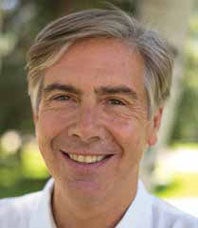 Elliot Gerson, executive vice president at the Aspen Institute, is responsible for its Policy Programs, its Public Programs, and its relations with international partners. The Institute’s more than 30 Policy Programs focus on both domestic and international issues. They provide neutral venues, do nonpartisan analysis, foster candid dialogue among leaders, advocate new policy and promote best practices. The Institute’s public programs – including the Aspen Ideas Festival and many smaller programs across the country – open the Institute’s doors to a broader audience and further both its educational goals and its hopes that thought will lead to action. The Institute has international partners in Europe, Asia, and Latin America. Gerson also administers the U.S. Rhodes Scholarships. He was a Rhodes Scholar, a U.S. Supreme Court clerk, practiced law in government and privately, held executive positions in state and federal government and on a presidential campaign, and before Aspen, was president of start-ups in health care and education, and of two leading national insurance and health-care companies.
Elliot Gerson, executive vice president at the Aspen Institute, is responsible for its Policy Programs, its Public Programs, and its relations with international partners. The Institute’s more than 30 Policy Programs focus on both domestic and international issues. They provide neutral venues, do nonpartisan analysis, foster candid dialogue among leaders, advocate new policy and promote best practices. The Institute’s public programs – including the Aspen Ideas Festival and many smaller programs across the country – open the Institute’s doors to a broader audience and further both its educational goals and its hopes that thought will lead to action. The Institute has international partners in Europe, Asia, and Latin America. Gerson also administers the U.S. Rhodes Scholarships. He was a Rhodes Scholar, a U.S. Supreme Court clerk, practiced law in government and privately, held executive positions in state and federal government and on a presidential campaign, and before Aspen, was president of start-ups in health care and education, and of two leading national insurance and health-care companies.
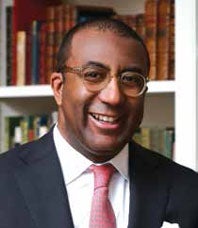 Eric Motley, Ph.D., is corporate secretary and an executive vice president at the Aspen Institute, responsible for institutional advancement and governance. Previous roles at the Institute include serving as managing director of the Henry Crown Fellowship, and executive director of its Commission to Reform the Federal Appointments Process. Before joining the Aspen Institute, he was Director of the U.S. Department of State’s Office of International Visitors within the bureau of Public Diplomacy. In 2003, he became Special Assistant to President George W. Bush for Presidential Personnel, having joined the White House staff as Deputy Associate Director, Office of Presidential Personnel in 2001. Eric’s second book, Madison Park: A Place of Hope, will be published in November 2017. He earned his bachelor’s degree in Political Science and Philosophy from Samford University in 1996. As a Rotary International Ambassadorial Scholar at the University of St. Andrews in Scotland, Eric earned a Master of Letters in International Relations and a Ph.D. in International Relations as the John Steven Watson Scholar.
Eric Motley, Ph.D., is corporate secretary and an executive vice president at the Aspen Institute, responsible for institutional advancement and governance. Previous roles at the Institute include serving as managing director of the Henry Crown Fellowship, and executive director of its Commission to Reform the Federal Appointments Process. Before joining the Aspen Institute, he was Director of the U.S. Department of State’s Office of International Visitors within the bureau of Public Diplomacy. In 2003, he became Special Assistant to President George W. Bush for Presidential Personnel, having joined the White House staff as Deputy Associate Director, Office of Presidential Personnel in 2001. Eric’s second book, Madison Park: A Place of Hope, will be published in November 2017. He earned his bachelor’s degree in Political Science and Philosophy from Samford University in 1996. As a Rotary International Ambassadorial Scholar at the University of St. Andrews in Scotland, Eric earned a Master of Letters in International Relations and a Ph.D. in International Relations as the John Steven Watson Scholar.
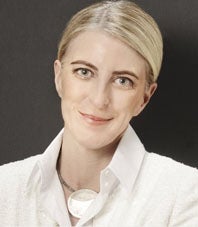 Heidi Zuckerman is the Aspen Art Museum’s Nancy and Bob Magoon CEO and Director. During her tenure with the museum, she has boosted its stature from local art gallery to internationally recognized institution successfully spearheaded a capital campaign to fund the museum’s new Shigeru Ban–designed building, raised over $120 M and increased their endowment by nearly 300 percent. To date at the AAM, she has curated over one hundred exhibitions, including traveling exhibitions to fifteen venues across North America. She also established the Aspen Art Press, which has produced over thirty exhibition catalogues distributed nationally and internationally. She has a book titled Conversations with Artists that includes 34 interviews she has done over the last decade coming out in October. She has also served as the Chair of the YPO Artnetwork for the last three years. Prior to this, Zuckerman served as the Chair of the Art Curatorial Department at the University of California, Berkeley Art Museum and Pacific Film Archive. She was also the Assistant Curator of 20th Century Art at the Jewish Museum in New York.
Heidi Zuckerman is the Aspen Art Museum’s Nancy and Bob Magoon CEO and Director. During her tenure with the museum, she has boosted its stature from local art gallery to internationally recognized institution successfully spearheaded a capital campaign to fund the museum’s new Shigeru Ban–designed building, raised over $120 M and increased their endowment by nearly 300 percent. To date at the AAM, she has curated over one hundred exhibitions, including traveling exhibitions to fifteen venues across North America. She also established the Aspen Art Press, which has produced over thirty exhibition catalogues distributed nationally and internationally. She has a book titled Conversations with Artists that includes 34 interviews she has done over the last decade coming out in October. She has also served as the Chair of the YPO Artnetwork for the last three years. Prior to this, Zuckerman served as the Chair of the Art Curatorial Department at the University of California, Berkeley Art Museum and Pacific Film Archive. She was also the Assistant Curator of 20th Century Art at the Jewish Museum in New York.